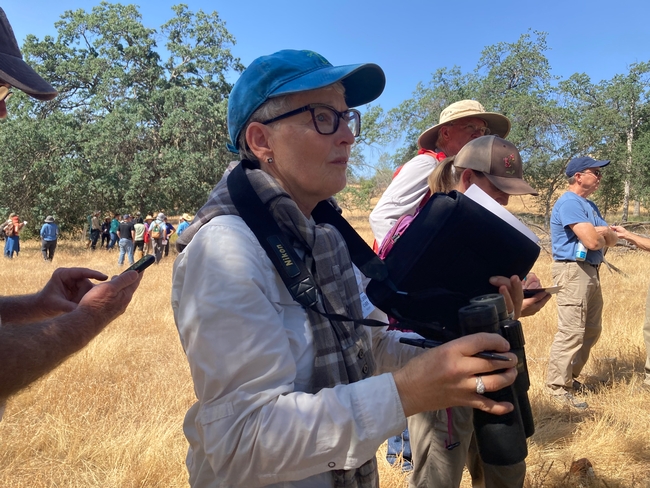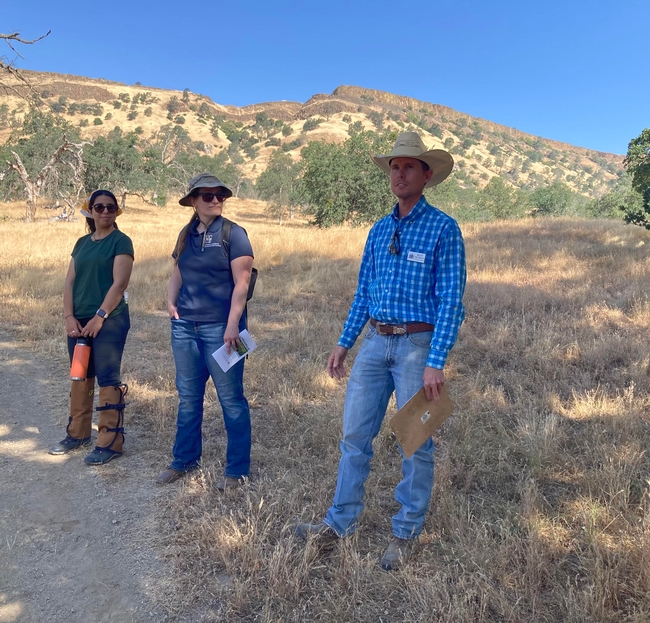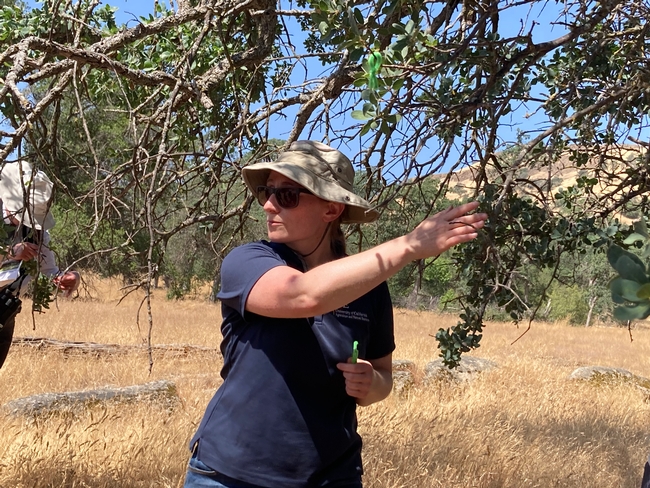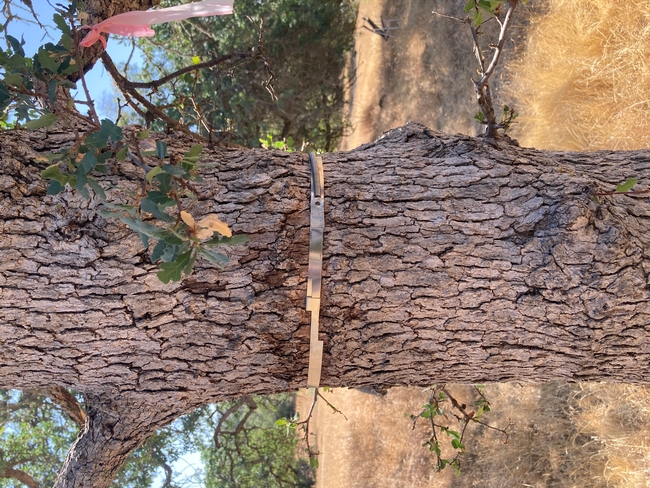Beth Linder Carr has lived among blue oaks in Auberry for nearly 35 years. There are dozens on her 10-acre property, but the one in particular she and her husband prize is a majestic specimen in the center of their circular driveway. They were dismayed when two huge limbs crashed down unexpectedly within the last 18 months.
“I thought it might not leaf out at all this year, but it's in full leaf now; its formerly huge canopy now patchy and uneven,” Linder Carr said. “Whether it's just old and dying, or the drought has contributed to its decline — or a combination — is unclear to me.”
Linder Carr brought her questions to a field day June 3 at the McKenzie Preserve near Prather, one of eight preserves owned by the Sierra Foothill Conservancy, where UC Cooperative Extension and other scientists shared early results of ongoing studies of blue oak trees.
Blue oaks are a keystone species in the foothill ecological zone, said Billy Freeman, Sierra Foothill Conservancy rangeland manager. They sequester carbon, provide wildlife habitat, support foothill biodiversity and are beautiful. Research underway at the site will inform landowners about how land management may impact the ecosystem, particularly considering the warming California climate.
The study is divided into two plots: one treated with short term, high density cattle grazing, and the other managed with continuous moderate grazing.
“A few years of monitoring the trees on these sites will help us understand which grazing practices best support blue oaks,” Freeman said.
Sokaina Alkhafaji is recording changes in oaks for the National Ecological Observatory Network. Dendrometers, aluminum bands rigged with small springs, were installed on 30 trees to accurately measure the incremental increase in tree diameter year to year. Each month, researchers visit the plot to document the timing of seasonal changes, such as bud break, leaf emergence, canopy fullness and acorn production.
“Right now, we don't know how oaks are doing. Does grazing management need to be changed? Do we need to cage seedlings?” she said.
The canopy areas and tree trunk diameter are documented in the first year of the study and will be repeated in five to 10 years. She visits the oaks twice a year. In the spring, her study documents tree vigor and mortality and the number of seedlings sprouting beneath tree canopies. In the fall, she counts acorns, measures shoot growth and confirms whether the seedlings found in the spring are still growing.
“Our goal is to monitor the trees at least 10 years in the four places,” she said.
The monitoring protocol is designed to be easy for foothill residents and land managers to replicate. For example, shoot growth is determined by twisting a pipe cleaner on twigs on the north, south, east and west sides of the tree, then returning to those twigs each year to measure new growth. Acorns are estimated by counting acorns in the oak canopy for a set period of time – such as 20 seconds – and then recording the number.
“Our key goal is making monitoring as consistent, time efficient and as cheap as possible,” Ozeran said.
The field day resonated with Linder Carr. As soon as she got home, she said, “I started looking at the trees with new eyes. Our big center oak, for instance, has much bigger girth than any of the trees on the preserve, and so it would be interesting to measure some of ours.”



